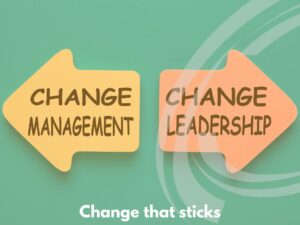Stop Standing Still: The Industry 4.0 Strategy Australian SMEs Can Use Today
What To Do This Quarter
Manufacturing is changing fast. Costs are tight. Customers want speed and quality. You can respond without building a new factory. You can create an Industry 4.0 strategy for Australian SMEs that links data, people and machines to clear results.
Start with three actions in the next 90 days.
- Select one line, product or process.
- Define a single problem, for example, scrap, rework or downtime.
- An instrument that processes and shows one live metric on a shared screen.
Close the loop with a daily stand-up. Assign owners. Act on the data for four weeks. This is an Industry 4.0 strategy for Australian SMEs in practice. It is small, fast and measurable. It builds confidence, skills and momentum.
Why Now, The Australian Context
Australia needs more advanced manufacturing. Supply chains are shifting. Energy prices require sharper control. Policy signals support local capability and a cleaner industry. These signals matter for planning and investment. They point to skills, technology and collaboration. They support local value-adding and smarter factories. They reward firms that move first.
A sound Industry 4.0 strategy for Australian SMEs fits this moment. It uses sensors, dashboards and standard work to cut waste. It builds skills in short cycles. It protects data and improves safety. It helps firms win repeat work at sustainable margins.
What Industry 4.0 Means For Your Business
Industry 4.0 connects equipment, data and teams. It is not a shopping list of gadgets. It is a way to run your plant. It is a way to make the next order right the first time.
An Industry 4.0 strategy for Australian SMEs delivers outcomes.
- Less downtime through predictive maintenance and better planning.
- Fewer defects through real-time checks and clear work standards.
- Shorter lead times from improved flow and smarter scheduling.
- Safer work from assisted tasks and better ergonomics.
- Lower energy use through metering and alerts.
The focus is value, not novelty. Use technology to solve problems your teams face every day. That is the heart of an Industry 4.0 strategy for Australian SMEs.
The Business Case, Prove Value Early
You do not need a thick business case to start. You need a small pilot with a clear target.
- Choose a metric that matters, for example, first pass yield.
- Baseline it for four weeks.
- Make one change, for example, an early warning sensor on a known fault.
- Measure for four more weeks.
- Bank the gain and document the lesson.
Use the savings to fund the next step. Keep capital light at first. Negotiate flexible terms with vendors. This is how an Industry 4.0 strategy for Australian SMEs pays its way.
A Staged Roadmap You Can Run
The first 90 days, prove it fast
This phase builds trust and skills. Keep your Industry 4.0 strategy for Australian SMEs visible and simple.
- Pick one process with high scrap or delay.
- Map the steps on one page with clear pain points.
- Collect existing data from machines or spreadsheets.
- Add low-cost sensors only if you must.
- Stand up a basic dashboard.
- Run a daily huddle, assign actions and track impact.
The next 12 months, scale what works
Move from pilot to pattern. Keep the Industry 4.0 strategy for Australian SMEs pragmatic.
- Extend data capture to two more bottlenecks.
- Standardise data tags and naming.
- Add digital work instructions with photos and short clips.
- Trial one collaborative robot for a repetitive or risky task.
- Meter electricity at the machine or line level.
- Lift baseline cybersecurity with routine checks.
The next 24 months, integrate the chain
Connect suppliers and customers where it counts. Your Industry 4.0 strategy for Australian SMEs now spans the value chain.
- Share schedules and key quality signals with suppliers.
- Offer customers live order status and certificates.
- Use additive manufacturing for jigs, fixtures and low-volume parts.
- Link maintenance, quality and production data for root cause analysis.
- Review product mix. Stop low-margin variants and focus on profitable custom work.
The Core Building Blocks, Explained In Plain English
Cloud platforms
Cloud is more than storage. It lets you collect, process and share data without buying servers. Choose a secure platform with device data support, dashboards and role-based access. Turn on only what you need. This keeps costs in line with value.
Data and analytics
Start with three questions:
- What happened?
- What might happen?
- What should we do next?
Build consistent reports first. Then add alerts. This is the practical path to an Industry 4.0 strategy for Australian SMEs that teams can run without a data science unit.
Internet of Things
Sensors and gateways let your machines talk. Begin with the signals that drive flow, for example, run, stop, alarms and energy draw. Use these to reduce changeover times and break down unplanned downtime. Add quality sensors when the basics are stable.
Additive manufacturing
3D printing is not only for prototypes. It shortens lead times for jigs, fixtures and spares. It reduces waste and risk. It supports small batch work. Use it to cut set-up times and to keep critical spares on hand. It fits a lean Industry 4.0 strategy for Australian SMEs.
Robotics and automation
Collaborative robots can work close to people when risks are managed. Use them on tasks that are repetitive, heavy or highly precise. Start with a single cell. Make the standard work clear and safe. Train operators to own the cell. Scale only when the numbers make sense.
Artificial intelligence
AI helps with scheduling, quality checks and maintenance. Keep scope tight. Use AI to support a skilled team, not to replace it. Start with high signal data and measured pilots. Blend AI with standard work. That keeps the Industry 4.0 strategy for Australian SMEs grounded and safe.
People First, Skills That Make It Work
Technology pays off when people trust it and use it. Plan skills early. Keep learning loops short. Pair experienced operators with digital natives. Let them design the new standard work together. Recognise and reward improvements.
Practical ideas.
- A weekly fifteen-minute lunch and learn led by operators.
- Cross-training on changeovers and first-line maintenance.
- A visible skills matrix with clear goals for each role.
- Micro learning on dashboards, sensors and root cause tools.
- Peer-led trials with a simple one-page hypothesis.
Build internal champions. Give them time and tools. This builds an Industry 4.0 strategy for Australian SMEs that lasts beyond the first project.
Governance, Data And Cybersecurity
Treat production data like any other asset. Decide what to collect. Decide how long to keep it. Decide who can see it. Set simple rules you can audit. Include privacy and customer data in your plan.
Make security routine. Add checks to changeovers and maintenance. Link supplier onboarding to your baseline controls. Keep software and firmware current. Use strong access controls. Tie backups to a drill, not a hope.
This disciplined approach supports any Industry 4.0 strategy for Australian SMEs. It protects your hard-won gains from disruption and loss.
Energy, Sustainability And Cost
Energy is a significant cost in many plants. Meter at the line or machine level. Show weekly charts and link energy to output and defects. Small changes in set points and shutdown routines add up. Plan for the longer term as the local energy mix and prices change. Consider electrification, power factor correction and smarter controls. This reduces cost and improves emissions at the same time.
An Industry 4.0 strategy for Australian SMEs makes energy data useful. It helps teams find the wins that last.
Supply Chains, From B2B To C2B
Digital tools let you work closer to customers. Short runs become viable when changeovers are quick and data is accurate. Offer configuration within limits. Use digital work instructions to deliver right first time. Share status with customers and collect structured feedback.
On the inbound side, give suppliers your schedule and quality signals. Reward reliable partners. Reduce the number of variants. Keep buffer stock for parts that fail often or have long lead times. This shift from firefighting to planning marks a mature Industry 4.0 strategy for Australian SMEs.
The Australian Policy Landscape: What To Watch
Public policy matters. It shapes finance, training and demand. Track programs that support advanced and clean industry. Watch skills reports. Review robotics and cyber guidance. Scan energy updates. Map each to real plans in your own plant.
A strong Industry 4.0 strategy for Australian SMEs aligns with these signals without waiting. It moves now and connects to programs as they mature.
Case In Point: A Local Example
Australian manufacturers are modernising their work with sensors, robotics, and data-driven technology. Many have built smarter factories while upskilling their teams. Projects show gains in quality, lead time and export capability. The lesson is simple. Start small. Build skills with your teams. Measure gains. Scale what works. This is how an Industry 4.0 strategy for Australian SMEs pays off in real markets.
Metrics That Matter
Measure what teams can act on. Keep the list short.
- Flow, cycle time, queue time, on-time delivery.
- Quality, first pass yield, customer returns, cost of poor quality.
- Reliability, mean time between failures, mean time to repair.
- Energy, kilowatt hours per unit.
- Safety, near misses, and manual handling exposure.
- Cyber, phishing test pass rate, patch age, recovery time.
Put the measures on a visible board. Update daily. Discuss them on the floor. This turns data into performance. It is the core habit in an Industry 4.0 strategy for Australian SMEs.
Avoid Pilot Purgatory
Pilots fail when they chase novelty or ignore people. Avoid this with a one-page hypothesis for every trial. Define the metric, the owner, the time box and the decision rule. Hold a weekly review. If a trial fails, stop it. Record the lesson. Start the next trial. This rhythm keeps an Industry 4.0 strategy for Australian SMEs honest and fast.
Build Versus Buy: A Practical View
You can rent most tools. That helps you learn without significant capital risk. Build only when the process is unique or the data is sensitive. For everything else, buy or subscribe. Negotiate terms that let you exit if the fit is poor. Seek partners who understand small company constraints and local conditions. Keep integration simple. This is how a lean Industry 4.0 strategy for Australian SMEs stays flexible.
Industry 5.0, Keep People At The Centre
A human-centred view is growing. It balances technology with wellbeing and sustainability. In practice, it means better ergonomics, fewer manual lifts and clearer interfaces. It means more interesting work and better retention. It also means designing for reuse and lower waste. As you advance, keep that balance. It strengthens any Industry 4.0 strategy for Australian SMEs and sets you up for what comes next.
Your Twelve-Month Action Plan
Use this outline and adapt it to your shop.
- Month 1 to 3
- Pick one pilot line with visible pain.
- Stand up daily huddles on the floor.
- Visualise one live metric everyone understands.
- Start baseline cybersecurity and simple data rules.
- Months 4 to 6
- Add changeover standards with photos.
- Meter energy at the line and share weekly charts.
- Train two internal champions with time to lead.
- Document a light data policy and access model.
- Months 7 to 9
- Add predictive maintenance on one asset.
- Trial a collaborative robot on a repetitive task.
- 3D print two fixtures to cut set-up time.
- Review supplier data sharing for one critical part.
- Months 10 to 12
- Share live order status with one customer.
- Share schedules and quality signals with two suppliers.
- Review product mix and pause one low-margin variant.
- Publish your first annual digital roadmap.
This action plan is a practical Industry 4.0 strategy for Australian SMEs. It is governed, staged and fundable. It builds skills while it builds value.
Frequently Asked Questions, Straight Answers
Do we need a big MES from day one?
No. Start with clear work standards, a visible board and a light dashboard. Add functions as needs grow. That is still an Industry 4.0 strategy for Australian SMEs.
What if our machines are old
Most older machines expose basic signals. Start there. Use low-cost sensors where you must. Build confidence before you scale.
How do we fund it
Use operating savings to fund the next step. Align larger investments with relevant public programs when they fit your goals. This reduces risk and supports your plan.
What about security
Security is a production issue. Treat it as part of your daily work. Use a simple baseline and lift it over time. Build habits, not fear. A strong security rhythm protects any Industry 4.0 strategy for Australian SMEs.
When you hear “Essential Eight,” it refers to eight practical controls that reduce risk. In dot form, they are:
- Application control: allow only trusted software to run.
- Patch applications and update software to fix known flaws.
- Configure Microsoft Office macro settings, block risky macros by default.
- User application hardening, disable features that attackers often abuse.
- Restrict administrative privileges, grant admin rights only when needed.
- Patch operating systems and update OS on servers and devices.
- Multi-factor authentication requires a second step to log in.
- Regular backups, keep tested backups offline and ready to restore.
Start at a basic level. Improve the weakest area each quarter. Link checks to maintenance and changeovers. Keep records repeatable and straightforward. This approach fits a busy plant and supports a growing Industry 4.0 strategy for Australian SMEs.
Is this only for big factories?
No. An Industry 4.0 strategy for Australian SMEs works in job shops, food producers, metal fabricators and electronics assemblers. Start small. Scale what works.
How SBAAS Helps
SBAAS designs and delivers practical roadmaps for smaller firms. We work with your teams on the floor. We set targets, build the first dashboards and coach daily huddles. We help you choose vendors and negotiate fair terms. We remain independent. We recommend only what fits your goals, budget and risk profile.
Most of all, we embed the habits that keep gains growing after we leave. This is how we deliver an Industry 4.0 strategy for Australian SMEs that sticks.
Book a time with our team if you want a scoping call to shape your first ninety days. Or, if you would like to learn more about who we are and how we work, explore our story at https://www.sbaas.com.au/about-us/.
Sources
Australian Bureau of Statistics. Australian Industry, latest release. https://www.abs.gov.au/statistics/industry/industry-overview/australian-industry/latest-release
Australian Bureau of Statistics. Labour Force, Australia, Detailed, July 2025. https://www.abs.gov.au/statistics/labour/employment-and-unemployment/labour-force-australia-detailed/latest-release
Australian Government, Treasury. Future Made in Australia, Budget 2024–25. https://treasury.gov.au/policy-topics/future-made-australia
Australian Government, Budget 2024–25 Fact Sheet, Future Made in Australia. https://archive.budget.gov.au/2024-25/factsheets/download/factsheet-fmia.pdf
Prime Minister of Australia. Investing in a Future Made in Australia. https://www.pm.gov.au/media/investing-future-made-australia
Australian Cyber Security Centre. Essential Eight. https://www.cyber.gov.au/resources-business-and-government/essential-cybersecurity/essential-eight
Australian Signals Directorate. Annual Cyber Threat Report 2023–24. https://www.cyber.gov.au/about-us/view-all-content/reports-and-statistics/annual-cyber-threat-report-2023-2024
Jobs and Skills Australia. Jobs and Skills Report 2024. https://www.jobsandskills.gov.au/publications/jobs-and-skills-report-2024
Department of Industry, Science and Resources. Australian Government response, Driving advanced manufacturing in Australia. https://www.industry.gov.au/publications/australian-government-response-driving-advanced-manufacturing-australia-inquiry-and-report
Department of Industry, Science and Resources. National Robotics Strategy. https://www.industry.gov.au/publications/national-robotics-strategy
Austrade. Australia releases first National Robotics Strategy. https://international.austrade.gov.au/en/news-and-analysis/news/australia-releases-first-national-robotics-strategy
Department of Climate Change, Energy, the Environment and Water. Australian Energy Update 2024. https://www.energy.gov.au/sites/default/files/2024-08/australian_energy_update_2024.pdf
Advanced Manufacturing Growth Centre. Industry 4.0 Smart Factory project. https://www.amgc.org.au/project/industry-4-0-smart-factory/
REDARC Electronics. Factory of the Future with AMGC. https://www.redarcelectronics.com/au/discover/redarc-powers-towards-factory-of-the-future-with-amgc/
World Economic Forum. Advanced Manufacturing, A New Narrative. https://www.weforum.org/publications/advanced-manufacturing-a-new-narrative/
World Economic Forum. Unlocking Value from Artificial Intelligence in Manufacturing. https://www.weforum.org/publications/unlocking-value-from-artificial-intelligence-in-manufacturing/
Additive Industries. Volkswagen case study, tooling nozzle. https://www.additiveindustries.com/hubfs/additive-industries-website/Automotive%20v2/Volkswagen%20Case%20Study.pdf
3D Printing Industry. Volkswagen adds second MetalFAB 3D printer to optimise automotive manufacturing. https://3dprintingindustry.com/news/volkswagen-group-adds-second-metalfab-3d-printer-to-optimize-automotive-manufacturing-222900/
European Commission. Industry 5.0. https://research-and-innovation.ec.europa.eu/research-area/industrial-research-and-innovation/industry-50_en
Department of Industry, Science and Resources. Industry Growth Centres Initiative ends. https://www.industry.gov.au/news/industry-growth-centres-initiative-ends
OECD. SME digitalisation for competitiveness. https://www.oecd.org/en/publications/sme-digitalisation-for-competitiveness_197e3077-en.html

Eric Allgood is the Managing Director of SBAAS and brings over two decades of experience in corporate guidance, with a focus on governance and risk, crisis management, industrial relations, and sustainability.
He founded SBAAS in 2019 to extend his corporate strategies to small businesses, quickly becoming a vital support. His background in IR, governance and risk management, combined with his crisis management skills, has enabled businesses to navigate challenges effectively.
Eric’s commitment to sustainability shapes his approach to fostering inclusive and ethical practices within organisations. His strategic acumen and dedication to sustainable growth have positioned SBAAS as a leader in supporting small businesses through integrity and resilience.
Qualifications:
- Master of Business Law
- MBA (USA)
- Graduate Certificate of Business Administration
- Graduate Certificate of Training and Development
- Diploma of Psychology (University of Warwickshire)
- Bachelor of Applied Management
Memberships:
- Small Business Association of Australia –
International Think Tank Member and Sponsor - Australian Institute of Company Directors – MAICD
- Institute of Community Directors Australia – ICDA
- Australian Human Resource Institute – CAHRI
Our Consulting Services

Management Consulting
Compliance & Risk

Professional Writing Services
Consistency in Communication

Small Business Consulting
Sustainable Businesses

Start-ups
Set-up for Success
Further reading

From Centre to the Edges: A Practical Guide to the Political Left to Right Scale for Australian Business
We hear “far left” and “far right” every day. This guide starts in the middle, explains each step to the edges, and shows what the political left-to-right scale means for Australian enterprises of all sizes.

Critical minerals deal or commercial colonisation?
Australia and the United States have formalised a multi-billion-dollar arrangement to boost mining, refining and magnet materials. This guide sets out what has changed, what may come next, how it compares with China’s approach, and how Australian enterprises can position to win contracts and long-term customers.

Risk-Proof Your Board: The Australian Playbook For A Volatile Decade
Australian enterprises face a new normal of compounding shocks. This playbook shows how board risk preparedness builds resilience, protects value and accelerates recovery across organisations of every size.

Change That Sticks-Why Transformations Fail and How to Fix Them
Most transformations stall for the same reasons. Fuzzy outcomes. Unclear roles. Low adoption. This guide gives Australian leaders a practical blueprint to make change management for SMEs deliver and stick through right-sized governance, two-way communication, capability building, and meaningful metrics.

Stop the Burnout Spiral: The Australian SME scale-up strategy that grows profit, not chaos
Scaling is not about getting bigger. It is about getting better. This consultant’s playbook shows Australian SMEs how a clear scale-up strategy, grounded in capacity and demand planning, unlocks sustainable growth without breaking people, cash, or quality.

Silent Profit Killers: The Hidden Business Costs of Unmanaged Communication Channels
Across Australia, regional towns are finding new ways to grow, diversify, and thrive. By learning from successes and setbacks and understanding what strengthens local strategies, we can build a stronger future for rural communities.
SBAAS Events
What our clients are saying about us
Posted onTrustindex verifies that the original source of the review is Google. SBAAS were fantastic to work with on a detail-heavy tender with a tight turnaround. Their team helped us shape and compile our content to deliver a strong, high-quality submission. Highly recommend SBAAS to anyone looking for strategic support with tender development, with a touch of good humour along the way.Posted onTrustindex verifies that the original source of the review is Google. We engaged SBAAS to support the development of a complex government tender and couldn’t be happier with the outcome. SBAAS' professionalism, attention to detail, and ability to quickly understand our business and translate that into a compelling, well-structured submission were exceptional. They were responsive, collaborative, and a genuine extension of our team. Highly recommend for anyone looking for strategic, high-quality bid and tender writing support.Posted onTrustindex verifies that the original source of the review is Google. Eric and Team go above and beyond. They do an excellent job with researching to get everything that is legally required for Policies and QMS. Would recommend them them to everyone especially all the bookkeepers and accountants. Thank you guys, and extreme job. Love you work as always. 😀Posted onTrustindex verifies that the original source of the review is Google. Extremely professional and far exceeded by expectations. I will definitely be using their services again and highly recommend them. They have a spirit of excellence in everything they do which shines through when dealing with them.Posted onTrustindex verifies that the original source of the review is Google. Impressive consulting experience! The team is highly professional, with a hands-on approach that adds real value. Their dedication and expertise truly stand out. Highly recommended!Posted onTrustindex verifies that the original source of the review is Google. Super knowledgable company that provides great advice and support for small business. Super friendly, highly recommend.Posted onTrustindex verifies that the original source of the review is Google. As a new business owner, I recognised the value in seeking a business coach to help me achieve significant goals. After a disappointing experience with a previous coach, I was initially hesitant to try again. However, after seeing SBAAS's complimentary action plan, I thought there was no harm in investigating. Eric quickly identified gaps in my systems, and through a few targeted adjustments, I saw an immediate increase in both leads and sales. These changes also improved profitability—highlighting a major issue I hadn’t been aware of, as my previous coach’s guidance had me working for less than $7 per hour! I look forward to continuing working with Eric.
